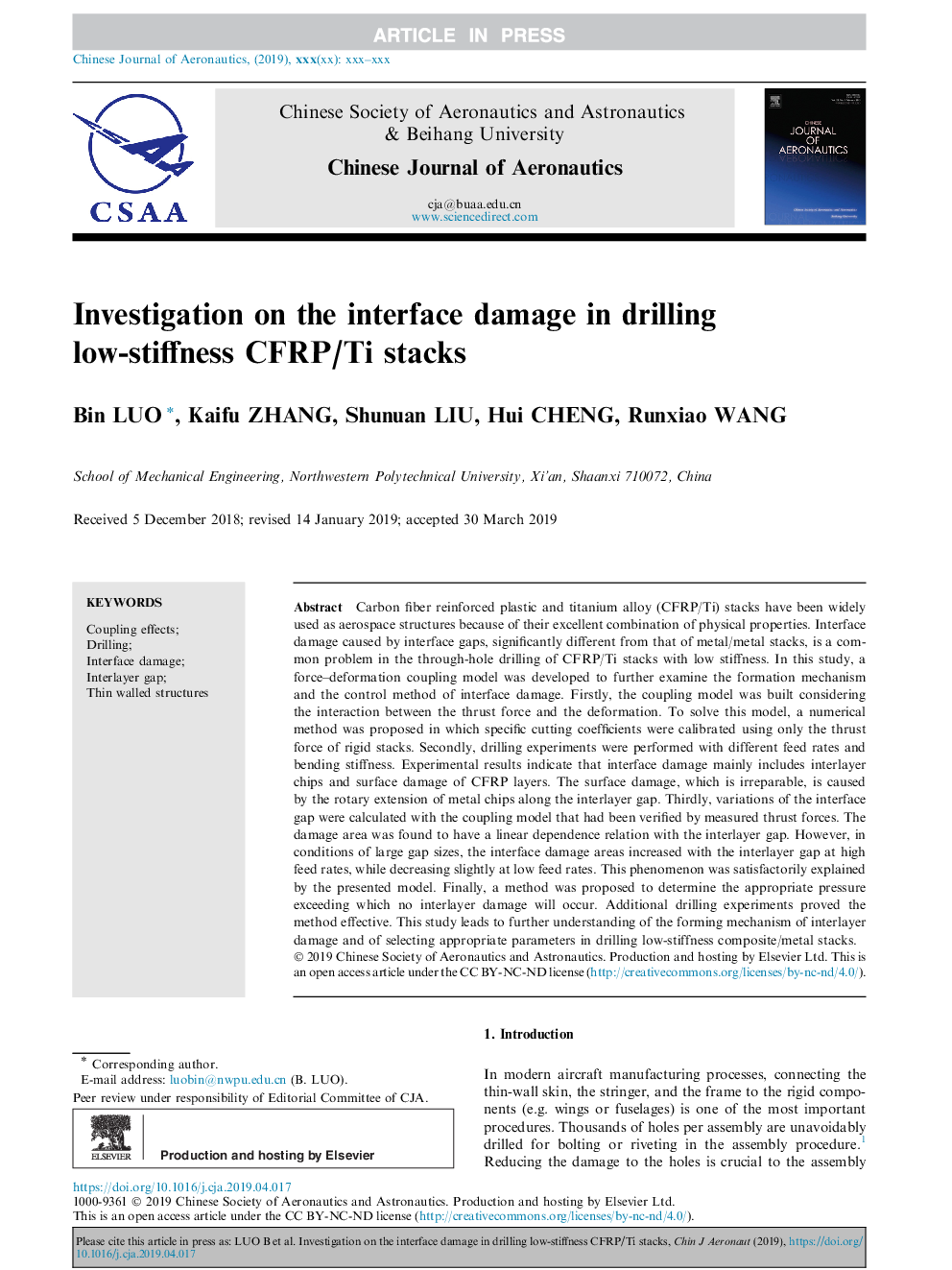| Article ID | Journal | Published Year | Pages | File Type |
|---|---|---|---|---|
| 13450016 | Chinese Journal of Aeronautics | 2019 | 11 Pages |
Abstract
Carbon fiber reinforced plastic and titanium alloy (CFRP/Ti) stacks have been widely used as aerospace structures because of their excellent combination of physical properties. Interface damage caused by interface gaps, significantly different from that of metal/metal stacks, is a common problem in the through-hole drilling of CFRP/Ti stacks with low stiffness. In this study, a force-deformation coupling model was developed to further examine the formation mechanism and the control method of interface damage. Firstly, the coupling model was built considering the interaction between the thrust force and the deformation. To solve this model, a numerical method was proposed in which specific cutting coefficients were calibrated using only the thrust force of rigid stacks. Secondly, drilling experiments were performed with different feed rates and bending stiffness. Experimental results indicate that interface damage mainly includes interlayer chips and surface damage of CFRP layers. The surface damage, which is irreparable, is caused by the rotary extension of metal chips along the interlayer gap. Thirdly, variations of the interface gap were calculated with the coupling model that had been verified by measured thrust forces. The damage area was found to have a linear dependence relation with the interlayer gap. However, in conditions of large gap sizes, the interface damage areas increased with the interlayer gap at high feed rates, while decreasing slightly at low feed rates. This phenomenon was satisfactorily explained by the presented model. Finally, a method was proposed to determine the appropriate pressure exceeding which no interlayer damage will occur. Additional drilling experiments proved the method effective. This study leads to further understanding of the forming mechanism of interlayer damage and of selecting appropriate parameters in drilling low-stiffness composite/metal stacks.
Related Topics
Physical Sciences and Engineering
Engineering
Aerospace Engineering
Authors
Bin LUO, Kaifu ZHANG, Shunuan LIU, Hui CHENG, Runxiao WANG,
